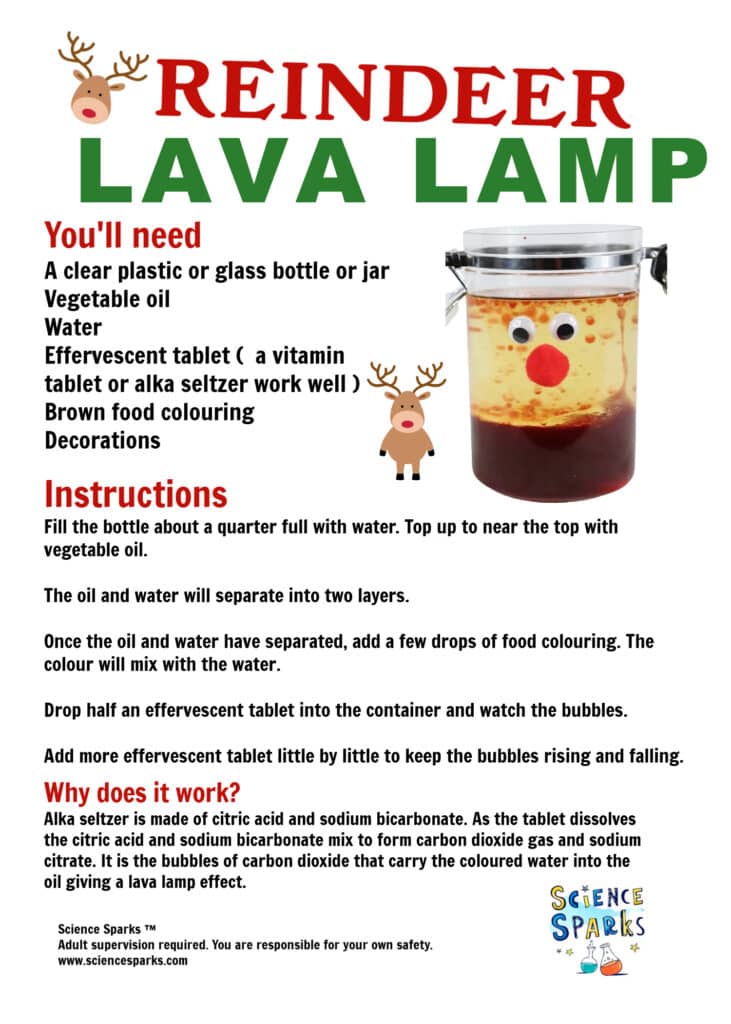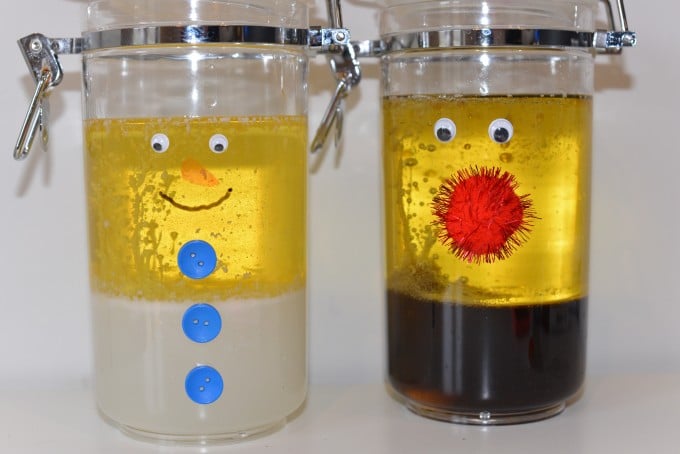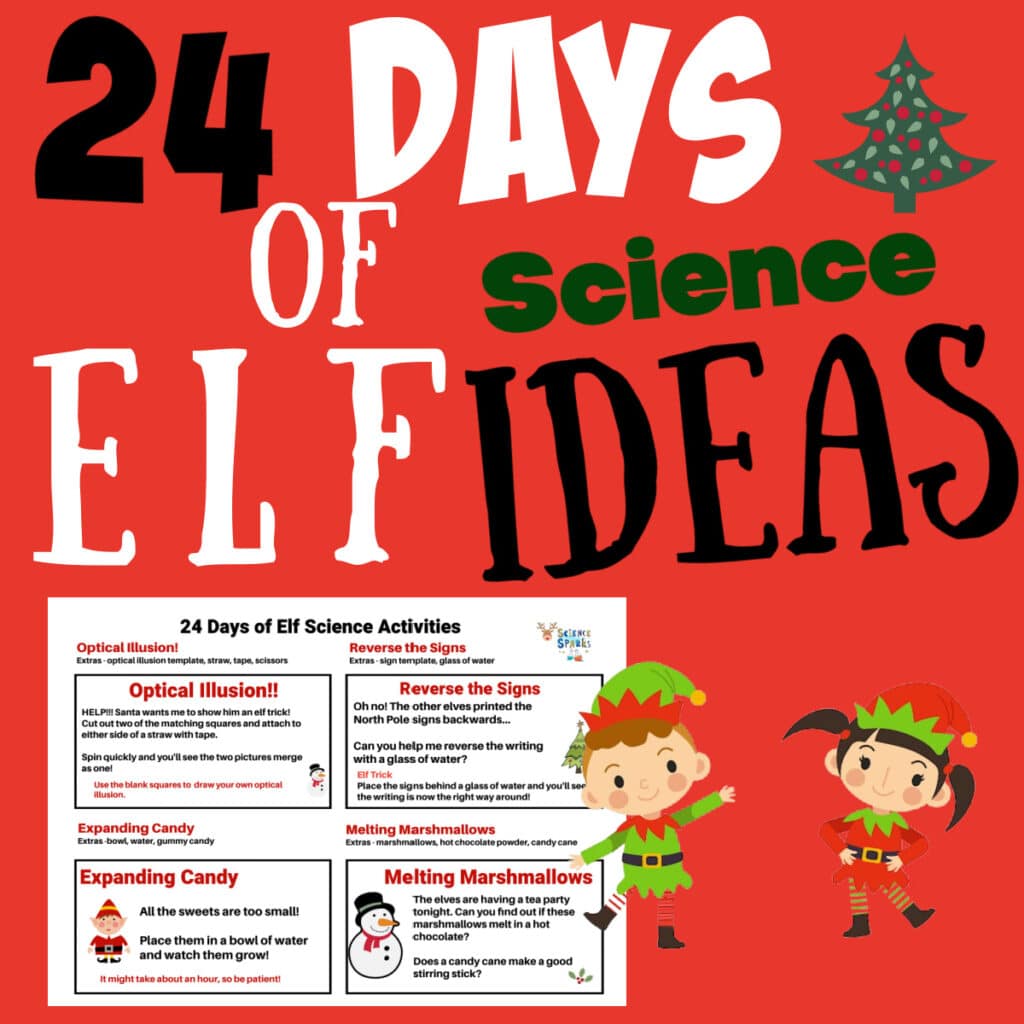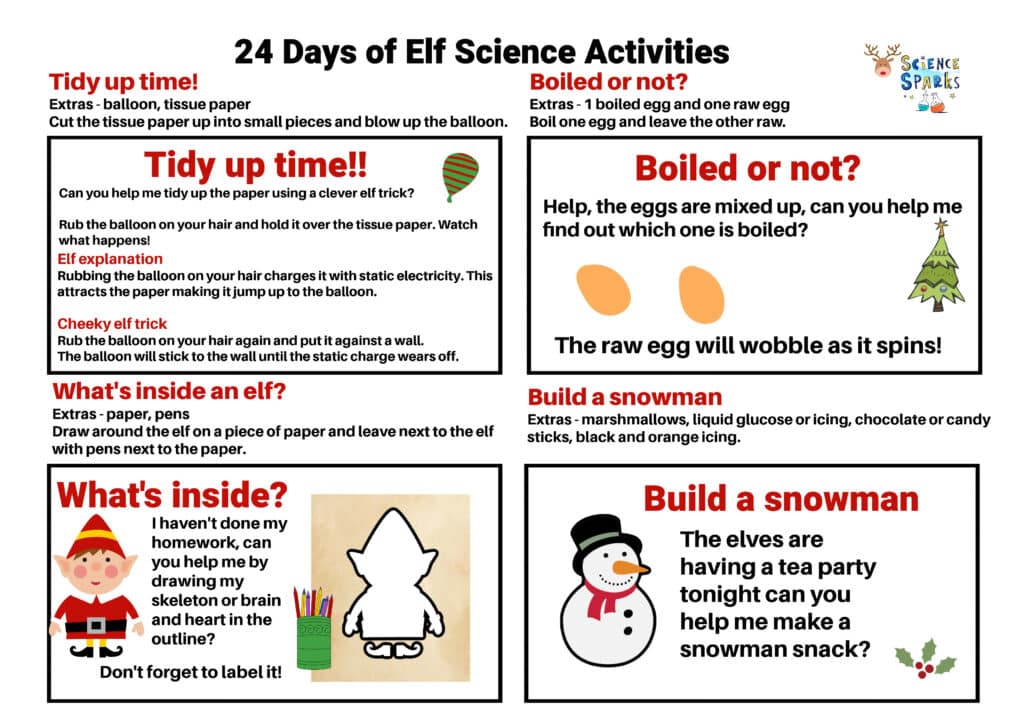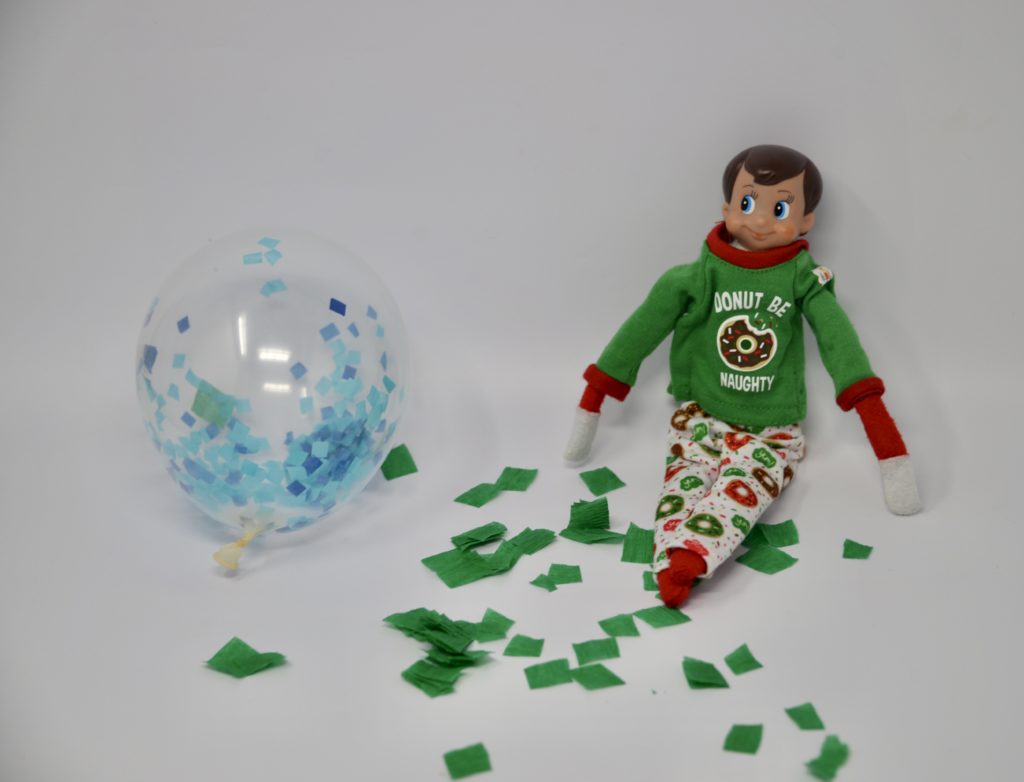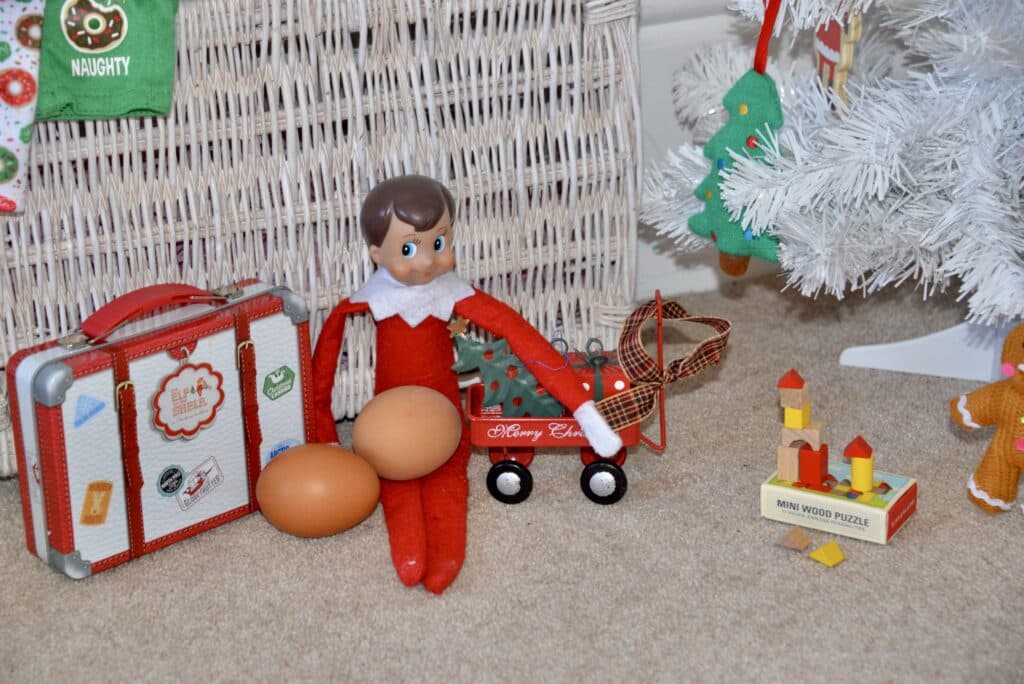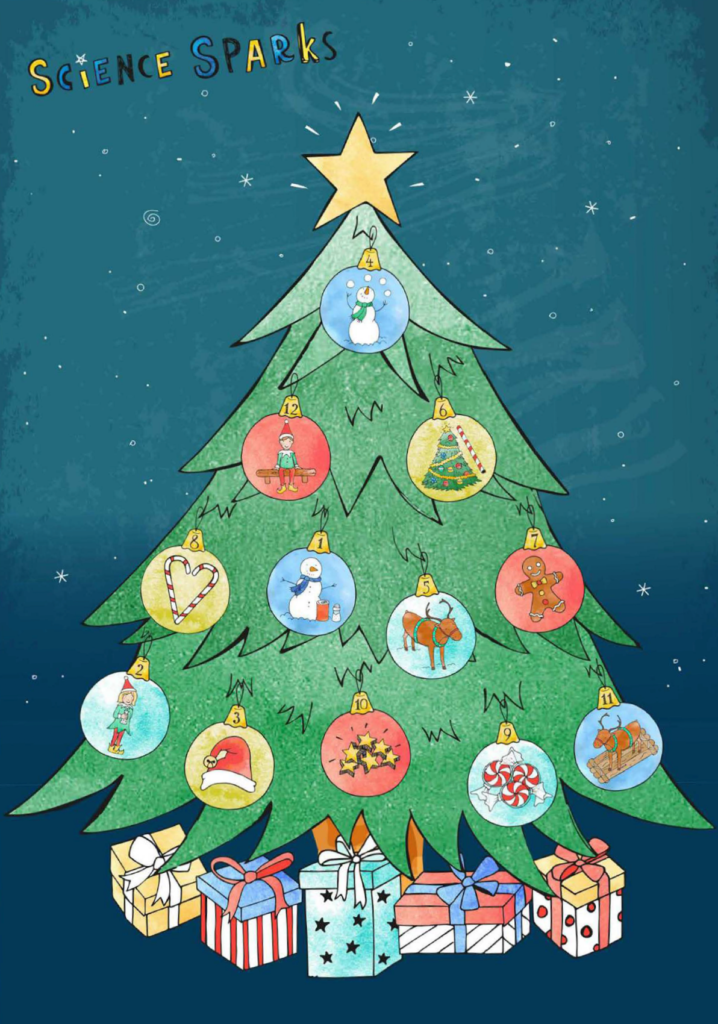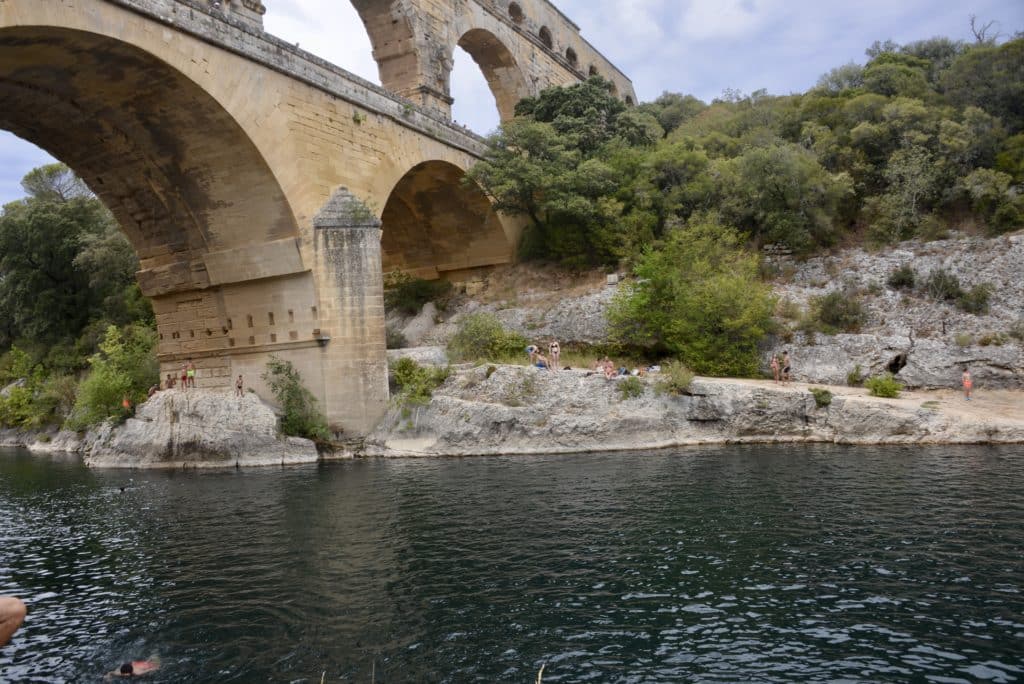Make your own science kit
Last year I made some very simple homemade science kits for my children to give to friends who love science. Each kit contained the materials and instructions for 5 different investigations.
I also have lots more FREE printable science experiment instruction sheets you can download, which would be a great addition to any homemade science kit.
This little kit makes an excellent, inexpensive science gift for Christmas or a birthday.
My super scientist certificate is a lovely extra resource as well.
How to make your own science kit
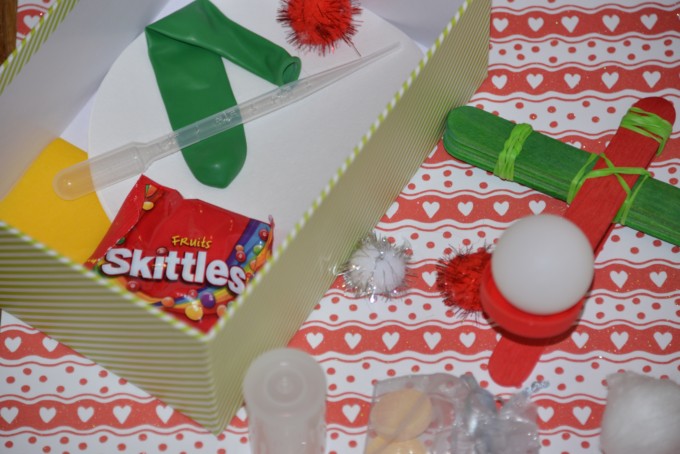
What you’ll need to make a homemade science kit
Balloon
Tissue paper
Skittles
Pom poms
Elastic bands
Lolly sticks
Effervescent vitamin tablets – give these to an adult
Ping-pong balls or pom poms
Instructions
Place all the items in a shoebox-sized box. I made the catapult, but another idea is to include the lolly sticks and
